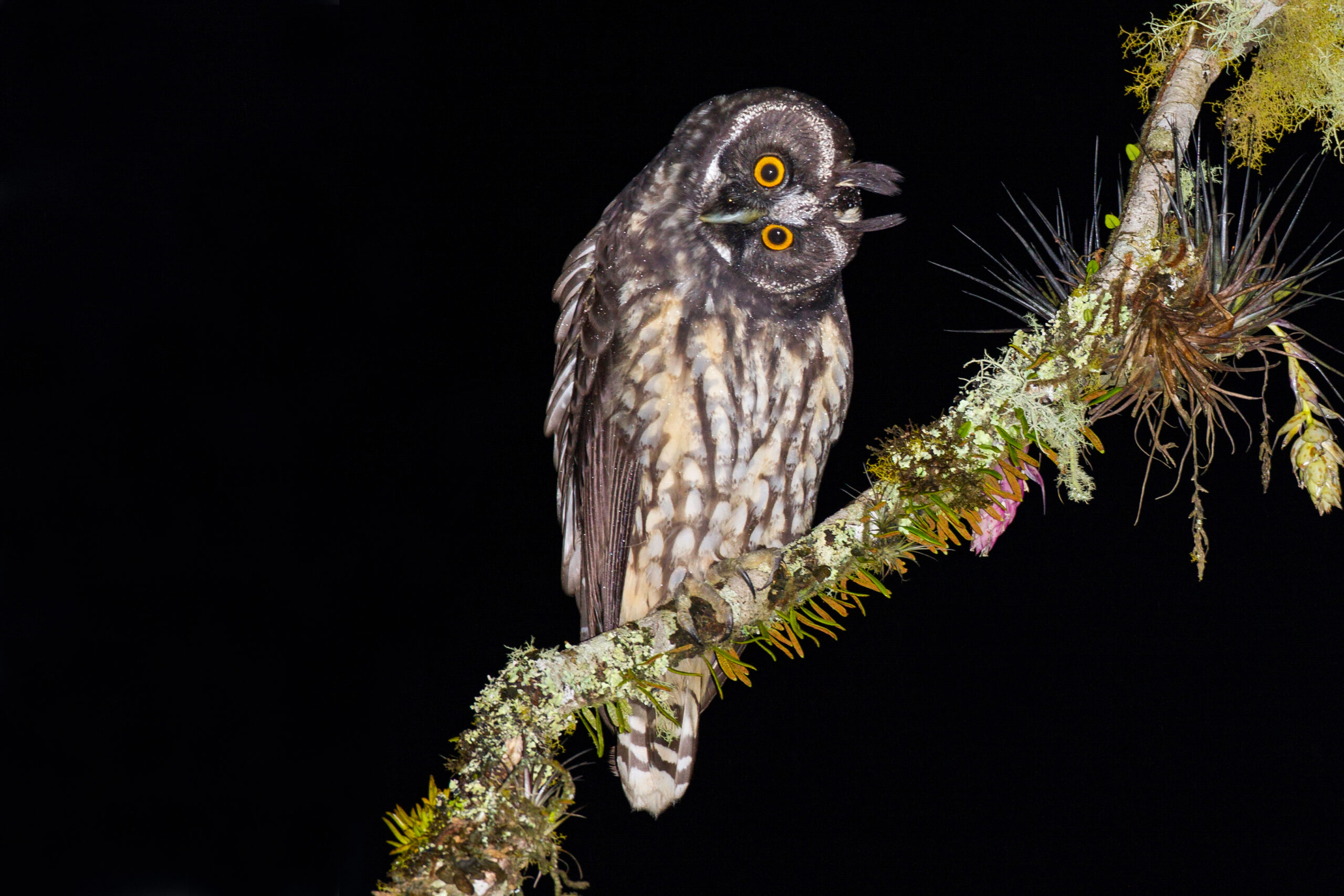In the mystical realms of the night forest, where darkness holds sway and shadows dance with the whispers of the leaves, the Stygian Owl, scientifically known as Asio stygius, marks its territory as a phantom of the night skies. This elusive and somewhat mysterious bird of prey navigates the nocturnal world with silent grace, embodying the enthralling mysteries of the avian kingdom.

Draped in a dark, dusky plumage which aids in its nocturnal endeavours, the Stygian Owl sports an impressive size, measuring anywhere from 38 to 46 centimeters in length. Its dark plumage is accentuated by piercing yellow eyes, which seem to hold an ancient wisdom, offering a striking contrast that adds to its mystic aura. The presence of tufts resembling ears, a feature it shares with other Owl species, grants it a distinctive, wise appearance.
The Stygian Owl can be found spanning across a diverse range of habitats in the Americas, from Mexico down through Central America to South America. Though not extensively documented, it is known to inhabit a variety of wooded habitats, including subtropical forests and montane regions. This bird of the night prefers the solitude and quietude of deep forests where it can hunt undisturbed.
Predominantly a nocturnal hunter, the Stygian Owl is equipped with exceptional hunting skills that are characteristic of the Owl family. Its diet is believed to comprise mainly of small mammals, birds, and insects, which it hunts with a sTealthy precision, aided by its acute sense of hearing and keen eyesight that can pierce through the darkness.
Nesting and breeding habits of the Stygian Owl remain relatively lesser-known, adding to its enigmatic nature. However, like other Owls, it is believed to nest in tree cavities or take over old nests abandoned by other birds. The female lays a clutch of eggs, the incubation and rearing of which is a collaborative effort between both parents.
Despite being a lesser-studied species, the Stygian Owl holds a certain allure for ornithologists and bird enthusiasts, who are drawn to its mysterious nature and the enigmatic world it inhabits. Its name, derived from the river Styx of Greek mythology, further adds a layer of mythic resonance to its persona, hinting at its ethereal connection to the night and the secrets it holds.
Conservation status of the Stygian Owl is currently not well established due to the limited data available. However, as with many wildlife species, it is assumed to face threats from habitat loss and fragmentation. This calls for heightened efforts in research and conservation to protect this mesmerizing species and unravel the secrets it holds.
In the tapestry of the avian world, the Stygian Owl emerges as a symbol of the mystical and unknown, urging us to explore the deeper realms of nature. As researchers continue to delve into its secretive life, the Stygian Owl promises to unfold chapters filled with intrigue and fascination, beckoning us into a world where the night unveils tales of enigmatic beauty and grace.